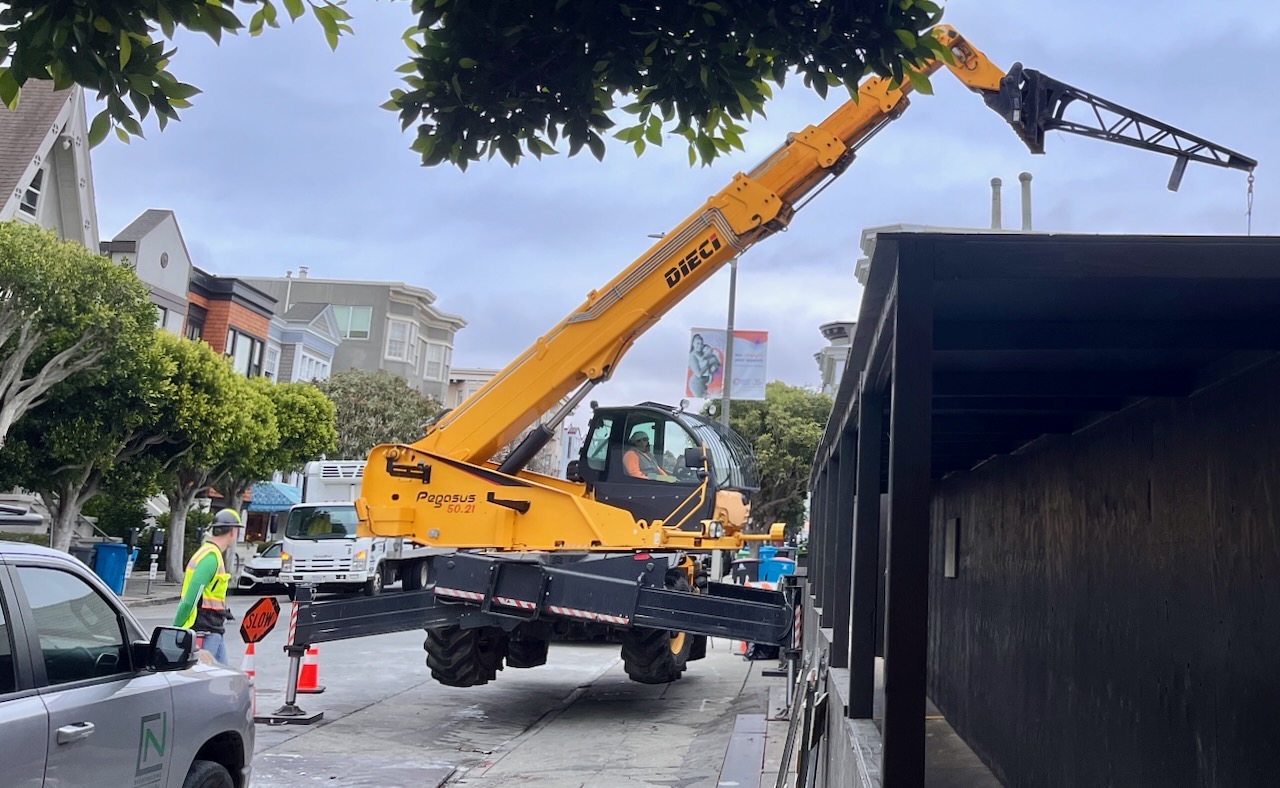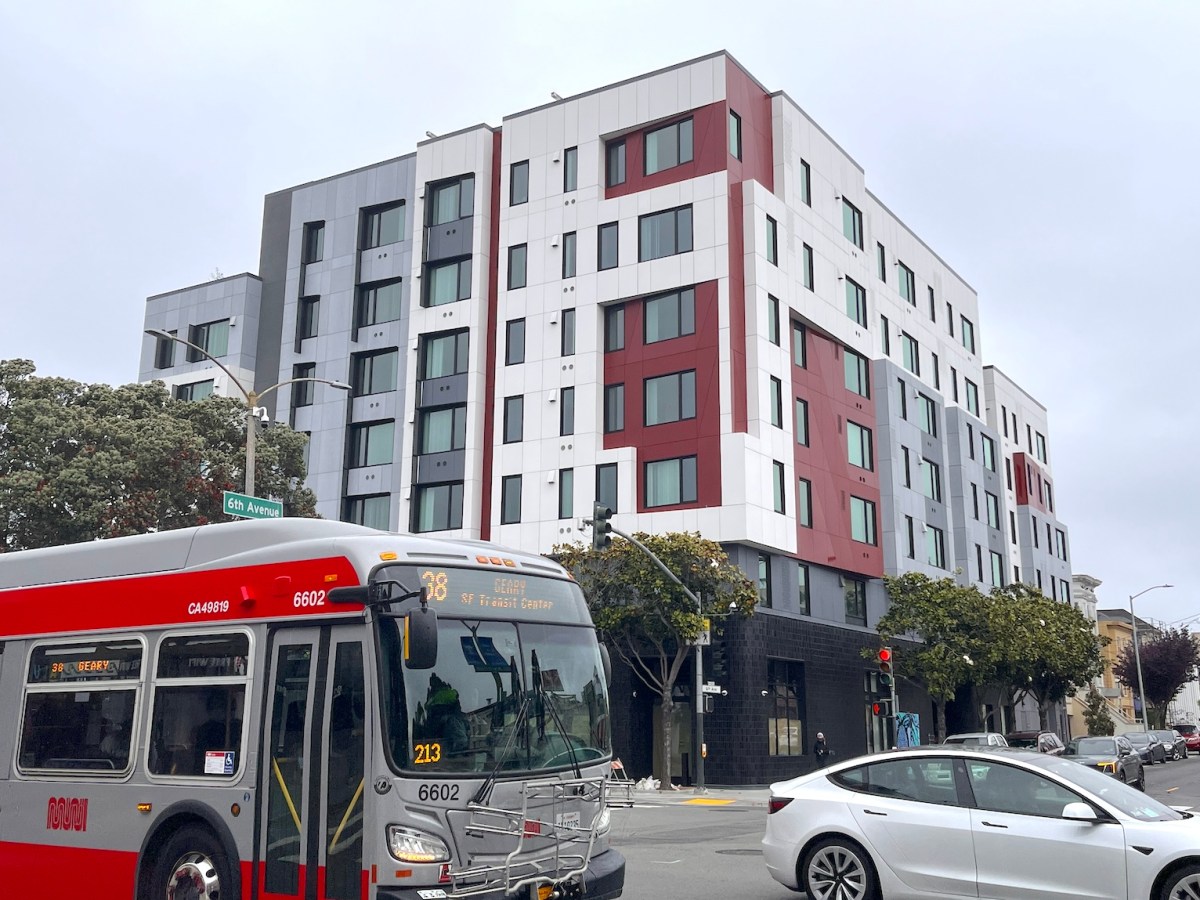Mayor Daniel Lurie faced a tough crowd in the Sunset District last week.
The packed recreation center — a last-minute venue change to take in more people — generally opposed the city’s plan to allow taller apartment buildings and denser blocks in their neighborhood and many others.
The goal is to make room for 82,000 new homes by 2031, though not all are meant to be built by then. With state housing regulators watching closely, SF can count some of the units from big projects like Treasure Island and Pier 70 toward that goal, but that still leaves more than 36,000 units unaccounted for.
In defense of the plan last week, Lurie made back-to-back appearances with State Sen. Scott Wiener, each taking questions from the Sunset crowd. The only reason Lurie didn’t get more flack is that Wiener, who represents SF in Sacramento, went first and absorbed a good deal of the scorn.
SF lawmakers must approve some version of what’s known as the Family Zoning Plan by the end of January, and it must be palatable to state regulators. This is thanks in large part to Wiener, who’s spent much of his Sacramento tenure crafting laws and battling local resistance to new housing.
Some Sunset residents, after ousting Sup. Joel Engardio in a decisive recall campaign, say they didn’t just oppose his support for turning the Great Highway into a car-free park. They’ve also cited Engardio’s pro-housing stance, and they believe the recall has given them momentum to oppose a taller, denser city.
The overlap between the two causes was clear last week. Several Sunset attendees flaunted “Open the Great Highway” signs. The next night, when District 2 Sup. Stephen Sherrill laid out the plan at a Pacific Heights town hall, one attendee mentioned Engardio and warned Sherrill about “supervisors who don’t listen.”
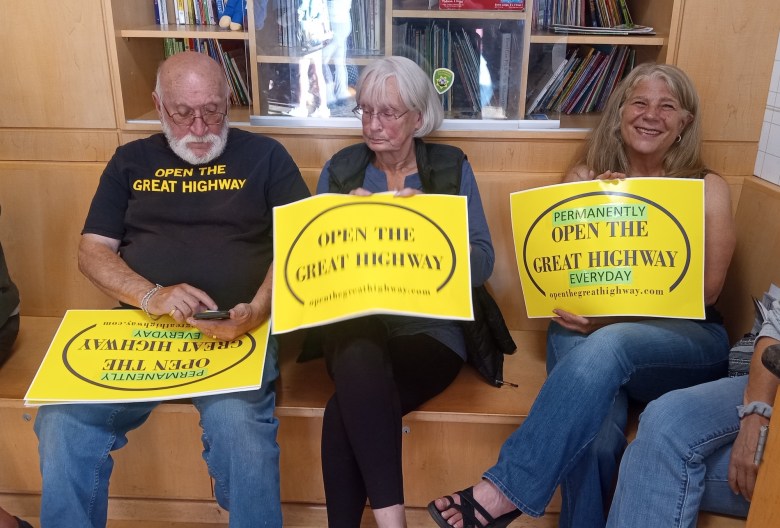 At the Sunset District housing forum, several people sported “Open the Great Highway” signs and extended their Joel Engardio opposition to anger over SF’s housing plan. (Photo: Adam Brinklow)
At the Sunset District housing forum, several people sported “Open the Great Highway” signs and extended their Joel Engardio opposition to anger over SF’s housing plan. (Photo: Adam Brinklow)
Both Sherrill and Lurie countered the hostility with a similar message: Our plan is good. And it’s a hell of a lot better than the alternative.
Lurie made his pro-housing stance no secret during his mayoral campaign. Last week, he tried to lend a sympathetic ear, calling his plan “the best way to protect San Francisco neighborhoods.” If it doesn’t pass, however, state regulators can suspend local housing rules, unleashing visions of developers carousing like spring break teenagers — but with concrete and rebar. “They’ll put towers everywhere,” Lurie said.
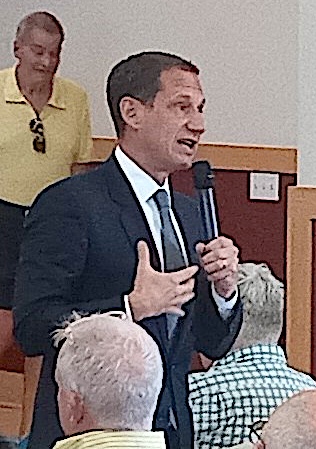 SF Mayor Daniel Lurie answers questions about his housing plan from a skeptical crowd on Oct. 6, 2025. (Photo: Adam Brinklow)
SF Mayor Daniel Lurie answers questions about his housing plan from a skeptical crowd on Oct. 6, 2025. (Photo: Adam Brinklow)
It’s a deliberate echo of the warnings of development foes, who say Ocean Beach will turn into Miami Beach.
Lurie was invoking the Builder’s Remedy, a California rule designed to scare cities and counties that aren’t planning seriously enough, and not fast enough, for more housing. “Eight counties are already subject to the Builder’s Remedy,” Lurie told the Sunset crowd several times. “We could be next.” (He could have added that state housing authorities have also put 63 cities on blast.)
Sherrill said the Family Zoning Plan was a more sophisticated, sensitive way to add density to places like Fisherman’s Wharf, Lombard Street, Geary Boulevard, Van Ness Avenue, and many other transit and commercial corridors.
Quintin Mecke, director of the Council of Community Housing Organizations, an alliance of tenant advocates, neighborhood groups, and affordable housing developers, tells The Frisc he’s not concerned about the Builder’s Remedy. “There’s almost zero chance of San Francisco ever being subject to it,” Mecke says. “It’s being used as a kind of political bogeyman.”
Mecke says SF has “a good relationship” with state regulators who will see SF is trying and not enact severe penalties.
A few California towns apparently haven’t tried hard enough. Just ask Santa Monica, San Jose, and Oakland.
Remedy projects
The highest-profile Builder’s Remedy case so far was three years ago in Santa Monica, which takes up much of Los Angeles County’s Pacific coast.
The remedy was only in effect for three weeks while the city was out of compliance. But in that window, 16 projects sailed through the approval process, mostly from one developer.
Santa Monica then sued the main developer, WS Communities. They eventually settled, with WSC withdrawing its Builder’s Remedy applications. It is developing its buildings under standard review, and the city is allowing WSC to concentrate all required affordable housing in a single building. One project recently won approval from the planning commission.
Now the remedy could be easier to use thanks to new state laws that protect it from legal challenges, according to density advocates. “This year’s big CEQA reform clears up a big possible source of uncertainty,” says Aaron Eckhouse of YIMBY Law.
The Builder’s Remedy is now in effect in the Bay Area towns of Clayton, Half Moon Bay, and Belvedere. Several more have recently been subject to it, at least briefly.
Down in Pacifica, the city is fighting a proposal for more than 1,200 affordable homes on an 87-acre property. Pacifica is not currently under the Builder’s Remedy, but it was when the developer applied for permits.
Faced with several Builder’s Remedy projects, Palo Alto, long resistant to development, loosened zoning rules to entice at least one project to a different part of town. Using the remedy, a plan to replace an old office park with more than 400 townhomes seems to be moving ahead in Walnut Creek. In San Jose, 780 units of modular affordable housing are in the works in the Alviso neighborhood.
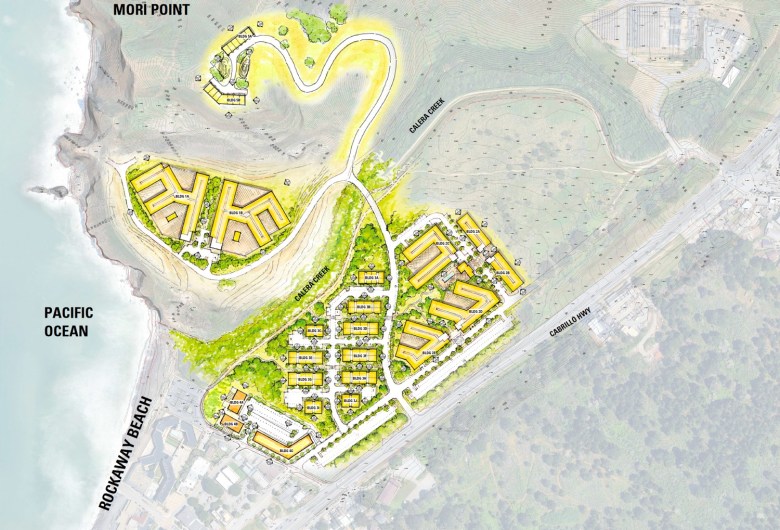 A plan for more than 1,200 affordable homes on the coast in Pacifica is moving ahead via the Builder’s Remedy. (BAR Architects & Interiors)
A plan for more than 1,200 affordable homes on the coast in Pacifica is moving ahead via the Builder’s Remedy. (BAR Architects & Interiors)
The Builder’s Remedy has been around since 1990. But the law was toothless until a Scott Wiener bill in 2018 made it easier to punish cities and counties that didn’t meet their state housing obligations, which get updated every eight years.
Once it’s in place, developers can choose their own adventure. In other words, by invoking the Builder’s Remedy, developers can decide the maximum height and density of a project.
There’s one catch: they also must price 20 percent of the building’s units as affordable housing. That’s actually higher than SF’s requirements at the moment.
It’s also lower than SF’s requirements before 2023, when supervisors changed the rules to encourage more development. They will revisit the rules again next year.
State: SF OK for now
The California Department of Housing and Community Development (HCD) is the watchdog making sure San Francisco and other municipalities plan for their fair share of new homes. HCD says SF’s current map is in compliance. But if supervisors reject it, alter it too much, or attach rules that create development bottlenecks, there’s no guarantee the state will approve it.
In coming weeks, supervisors will debate the map as well as additional rules to protect tenants and small businesses from displacement. Lurie yesterday endorsed another amendment, from Sup. Myrna Melgar, to exempt rent-controlled buildings with three units or more from redevelopment — about 84,000 units in all, according to Melgar’s press release.
The advocate group REP-SF, which has been a fierce critic of the plan but also helped write one of the protection rules, says the state’s approval criteria are unclear. They have “a lot of questions about what the state really needs SF to do in order to avoid the Builder’s Remedy,” says REP-SF spokesperson Joseph Smooke, who blames the mayor for lack of transparency.
(Lurie declined to answer The Frisc’s questions at last week’s forum.)
The map, which SF Planning designed, came from a blueprint known as the Housing Element. The Board of Supervisors passed the element unanimously in January 2023, although a few members made their distaste clear and said they had no choice.
The Housing Element focuses development on SF’s wealthier neighborhoods, mostly on the west and north sides, that have resisted new homes for decades and that have plenty of amenities, like schools and green space.
West side resistance, fueled by the Engardio recall, has added a wild card to the final stretch. Another problem is the sour economy. Despite the best efforts of Scott Wiener and allies, looser rules around planning and construction have rarely moved the needle in recent years.
It’s not clear a Builder’s Remedy window would overcome those economic headwinds in SF. But as SF Planning chief of staff Dan Sider notes, “Dramatically greater allowable square footage on a given site can of course make the economics of a project more favorable.”
More from The Frisc…

